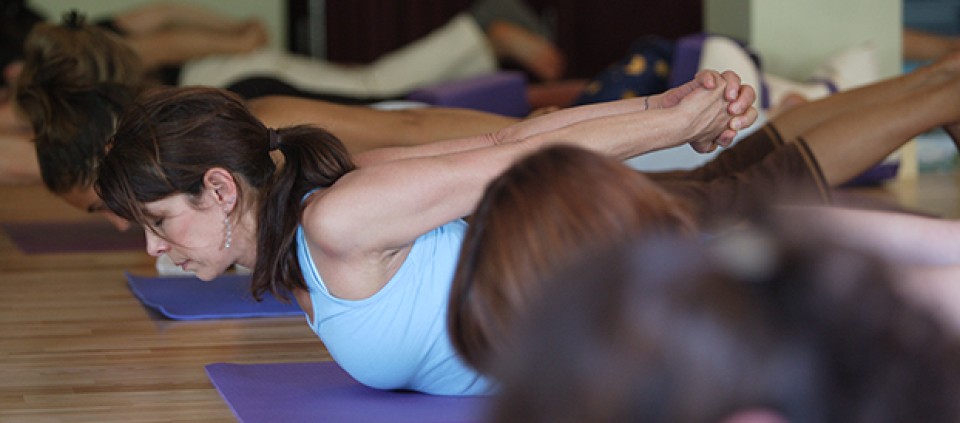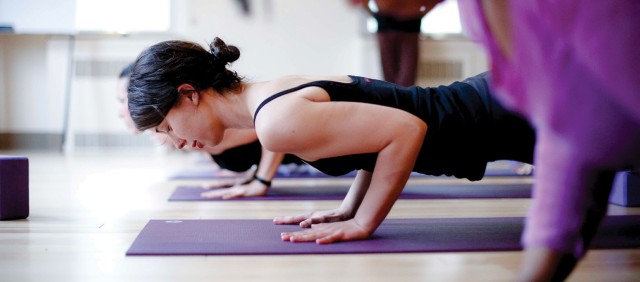How Yoga Helps Heal Trauma: A Q&A with Bessel van der Kolk

Bessel van der Kolk, MD, is a clinical psychiatrist whose work attempts to integrate mind, brain, body, and social connections to understand and treat trauma. He is the author of The Body Keeps the Score, which examines how trauma affects the brain and body, and looks at a variety of treatments, including yoga. He answered our questions about how yoga can be a powerful element in healing trauma.
How does yoga practice impact people who have experienced trauma?
When people think about trauma, they generally think of it as a historical event that happened some time ago. Trauma is actually the residue from the past as it settles into your body. It’s located inside your own skin. When people are traumatized, they become afraid of their physical sensations; their breathing becomes shallow, and they become uptight and frightened about what they’re feeling inside. When you slow down your breathing with yoga, you can increase your heart rate variability, and that decreases stress. Yoga opens you up to feeling every aspect of your body’s sensations. It’s a gentle, safe way for people to befriend their bodies, where the trauma of the past is stored.
How important is talk therapy in treating trauma?
If you’ve been traumatized, you’re likely to have a very distorted relationship to your body. My particular angle, or contribution, is that trauma is really a somatic issue. It’s in your body and, because of that, yoga has great relevance, because it goes directly to sensing and befriending the body. While talking and knowing what happened and being able to articulate it is an important part of treatment, the most important part is starting to regain ownership of your body and be comfortable in your own skin.
What does the evidence show as far as yoga’s efficacy?
Our studies show that yoga is equally as beneficial—or more beneficial—than the best possible medicatons in alleviating traumatic stress symptoms. In the studies we did involving neuroimaging of the brain before and after regular yoga practice, we were able to show that the areas of the brain involving self-awareness get activated by doing yoga, and those are the areas that get locked out by trauma and that are needed in order to heal it.
You also use other techniques to treat trauma, including EMDR, neurofeedback, and theater. How does each of these work?
My approach is very much “one size doesn’t fit all.” One method doesn’t benefit everybody. In order to recover from trauma, you need to address a large number of different systems. EMDR is particularly helpful to integrate traumatic memories, and it does so by shifting some areas of the brain involved in memory processing. Neurofeedback can affect brain activation patterns—it can actually change brain waves, and can help to make people’s brains quieter and more attentive. Yoga might be able to reach the same goal, but it would probably take longer. Theater is particularly helpful to help people gain a voice and to deeply inhabit a particular state. Instead of always feeling frightened or withdrawn, they can act like a king or a powerful warrior. It’s a consciousness-expanding tool. Also, traumatized people often misread other people, or become withdrawn or scared of others, and theater allows for deep engagement with other people.
Does yoga also promote connection for this population?
I don’t think yoga is a very social enterprise, but it’s interesting that it’s so much more satisfying to do yoga in a group than by yourself. There’s a likelihood that doing yoga in groups may activate the mirror neuron system of the brain, which is a system damaged by trauma, so practicing yoga and meditation in groups might give people a deeper sense of belonging.
It’s important to be aware that trauma is not unusual in people’s lives. More than 80 percent of the population has experienced a trauma at one or another point in their life, through accidents, alcohol, depression, family violence, or other circumstances or events. It’s very useful for yoga teachers to become aware of the implications of what they say and do, and the speed and the intensity of their methods and the effect it might have on people. Learning to own your body can be a terrifying thing—many people might have flashbacks and become panicked when they start doing yoga.
Is the mainstream healthcare system beginning to recognize yoga as an effective treatment for trauma?
I wouldn’t say it’s conquered the mainstream world by any means. You see evidence here and there—yoga is going on in some police academies and in the military. But it’s difficult to get research funding for this work, and I’m still considered an outlier for advocating for yoga for PTSD. Is mainstream medicine and psychiatry aware of the full potential of yoga for the treatment of trauma? No, absolutely not.
Bessel van der Kolk, MD, is president of the Trauma Research Foundation in Boston and author of the New York Times best-seller The Body Keeps the Score.
Full Bio and Programs